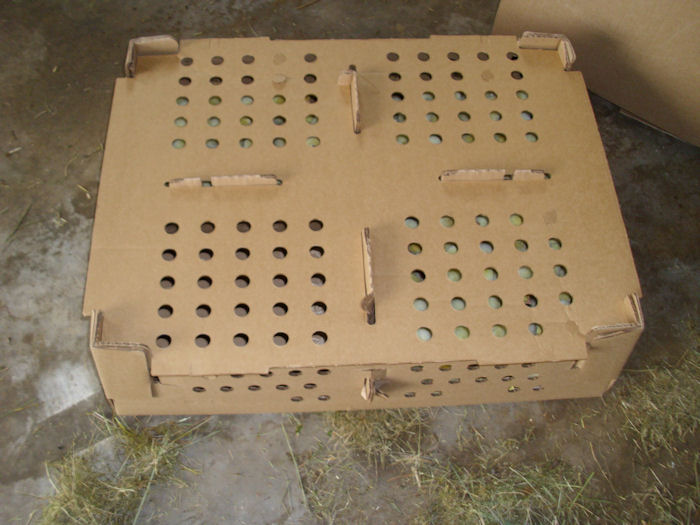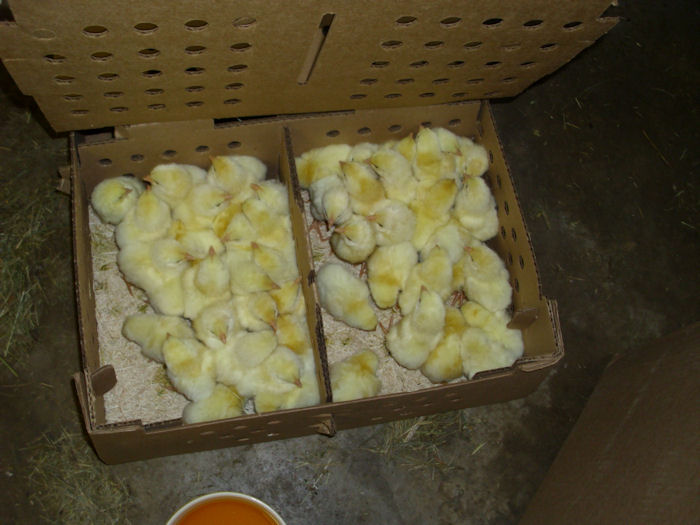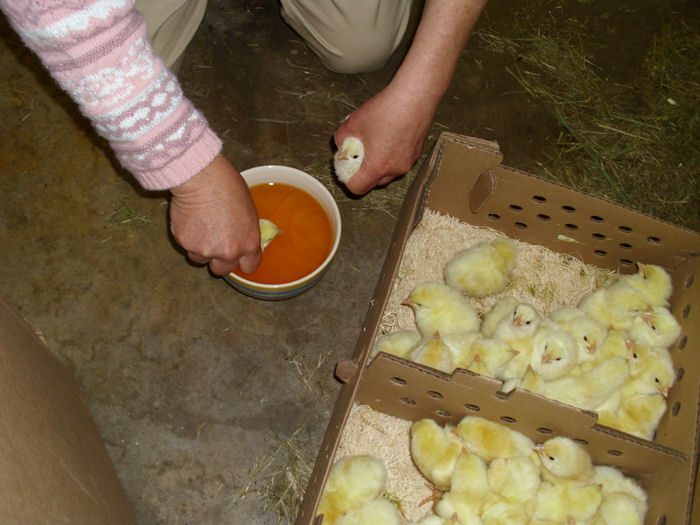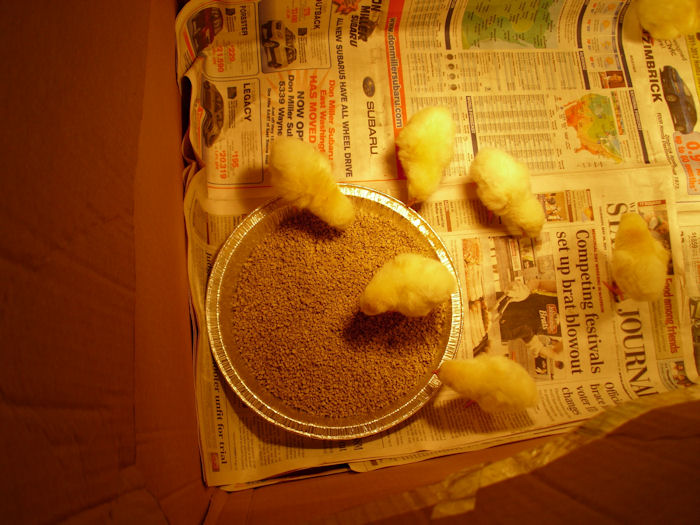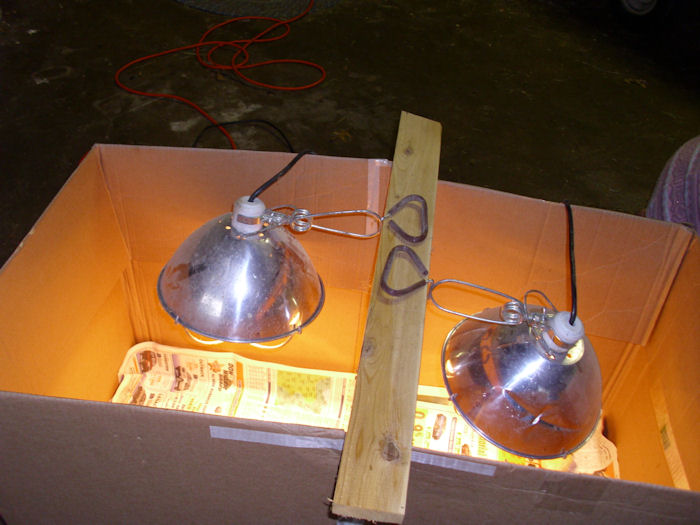Rebecca and I don’t raise chickens every year. We raise chickens for two years, then give the land a rest on the third year. This cycle ensures we meet a number of goals, including the reduction of disease risks that could occur if we raised chickens every year. We normally start with 75 Cornish Rock chicks because that provides us with about 1½ year’s worth of meat. The chicks arrive in a box like this one:
The baby chicks are packed pretty closely together so they stay warm. Chicks require a considerable amount of warmth or they’ll die. If you get chicks at some point, don’t be surprised at just how tightly they’re packed:
Of course, you’ll want to get them out of there as quickly as possible (the chicks will tend to want to run all over the place if you let them). However, the chicks don’t know how to drink when you first get them. The safest way to teach them to drink is to dip their beaks in a water solution as shown here.
The solution shown here is actually Gatorade. It contains a number of things the chicks need to get started. We provide them with watered down Gatorade for the first few days and find that it reduces the number of chick deaths (in most cases, we lose 2 or 3 chicks during this first stage, but we’ve had years where we didn’t lose any).
At this point, you put the chick into some type of container (we use a large cardboard box) with a pan of chick starter. We don’t believe in using many chemicals with our chickens, but we do use a chick starter that has medications in it to prevent diseases such as coccidia.
The chicks are kept under heat lamps until their full feathers grow in. We use disposable tin plates and replace their paper daily to ensure the chicks remain in the healthiest possible environment as shown here:
As the chicks grow, we’ll move them to non-medicated food. In fact, they’ll often eat garden scraps, plenty of grass, and have access to various other items that chickens would normally eat (such as worms) because we raise them in chicken tractors. We also move our chicks outdoors to chicken tractors so they can get plenty of fresh air and sunshine. I’ll talk about this next stage in a later post. For now, the chicks are snug under the heat lamps.
It’s important to provide the chicks with enough space, but not too much space. If you provide too much space, the more aggressive chicks will trample and kill the less aggressive chicks. At this point we supply 9 square inches of space for each chick. As the chicks grow, we increase the allotted area to 1 square foot per chicken. The full grown chickens will have 2 square feet or more of space. (Full grown chickens normally receive 1/2 square foot of space in factory conditions.)
We’ll start out by making food available to them 24 hours a day. After the first five days, we’ll withdraw food at night to prevent health problems. The chicks will have clean water available 24 hours a day. Overfeeding chicks (as is done in factory conditions) can result in a condition known as flip (the chick dies of a heart attack). We prefer to let our chickens grow slowly.

